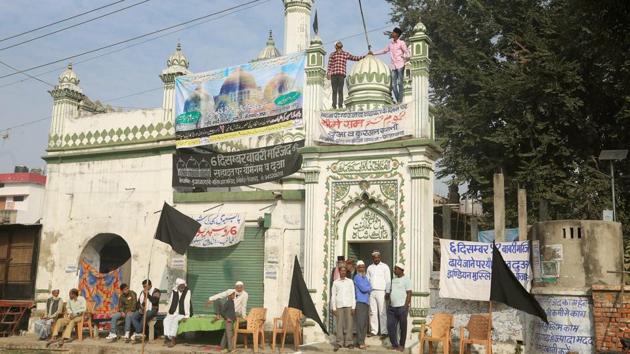Ram temple case: Muslims say Ayodhya row no more relevant to them, hope for a peaceful end
Many say that they have faith in the law or that the dispute no longer is of such pressing importance.
Bahraich is more than 100 kilometres away from Ayodhya, but on December 6, 1992, Mohammad Imtiyaz felt the reverberations of the Babri Masjid demolition in his neighbourhood. The 65-year-old man says the town was gripped by communal tension and this dealt a body blow to social harmony and trust between communities.

Now, 25 years on, Imtiyaz says he doesn’t care about the dispute anymore.
“Bhai humein na masjid chahiye na mandir, hume sukoon chahiye (we just want peace, neither temple nor mosque),” says Imtiyaz, who owns a small shop at Bhinga bus stand. “Bahraich was among the most affected districts in 1992. I have seen it all. But believe me, such issues are not going to help anyone in any way.”
Read | A timeline of key events in the Babri Masjid, Ram temple controversy
He is not the only one. The demolition and the riots that singed India in its aftermath sent shockwaves through the Muslim community and changed the political allegiances of the community, experts say.
“After the Babri Masjid demolition, Muslims lost trust in the Congress. They also felt that they could not get an equal share in the development process despite the Congress remaining in power both at the Centre and in Uttar Pradesh for decades,” said professor Badri Narayan of Govind Ballabh Pant Social Science Institute in Allahabad.
The Congress lost power in the state in the 1989 elections and has not won it back since.
In October 1990, when, as the chief minister, Mulayam Singh Yadav ordered firing on kar sevaks, 28 people died. This incident was condemned by Hindu groups, which derisively called him “Mulla Mulayam”.
“By his action, Mulayam was able to infuse a sense of security among the Muslims under his rule. They have remained loyal to him ever since,” said AK Verma, director at the Kanpur-based Centre for the Study of Society and Politics. Was there a nationwide impact on the Muslim community’s vote? Verma says there is no data to show that Muslims across the country moved away from the Congress.
But In Uttar Pradesh, Muslims, who form nearly a fifth of the state’s population, have since remained largely loyal to the Samajwadi Party, despite some attrition because of the 2013 Muzaffarnagar riots, where about 60 people were killed and thousands displaced.
The support helped Yadav form his famous Yadav-Muslim formula that helped his party come back to power three times after the Babri Masjid demolition.
Imtiyaz’s locality, for example, is known as Dargah because of the famous shrine of the Muslim saint Sayed Salar Masood Ghazi. It falls under the Bahraich assembly constituency, which the SP dominated for 20 years. But things are slowly changing.
The seat was won by the Bharatiya Janata Party (BJP) for the first time in the 2017 assembly polls. The saffron party won five of six assembly constituencies in the district, while the Samajwadi Party could only gain one.
The mood is reflected on the ground in the districts as well as in the Muslim-dominated neighbourhoods in the vicinity of Ayodhya. Many Muslims now say that they have faith in the law or that the dispute no longer is of such pressing importance.
“We will respect the court’s order, whatever it may be. But we really want this to end now as we cannot live with such a burden anymore,” said Aleem Khan, 62, village head of Wazeerpur, which falls on the main Bahraich-Bhinga highway.
Khan said he wanted the issue to end before his death. “It’s been quite a long time since we are facing this issue and living in fear. I cannot bear it anymore.”
In Gonda and Faizabad districts, people blamed the BJP for raking up a matter they said was no longer relevant to their lives.
“People should understand that political parties are still following the divide-and-rule formula,” said Mehmood Hasan, a villager from Gandhariya village in Gonda district.





